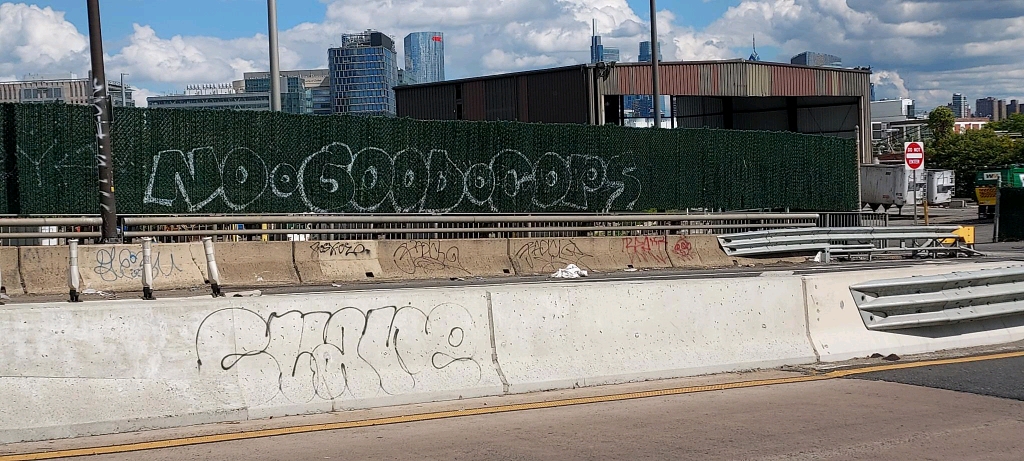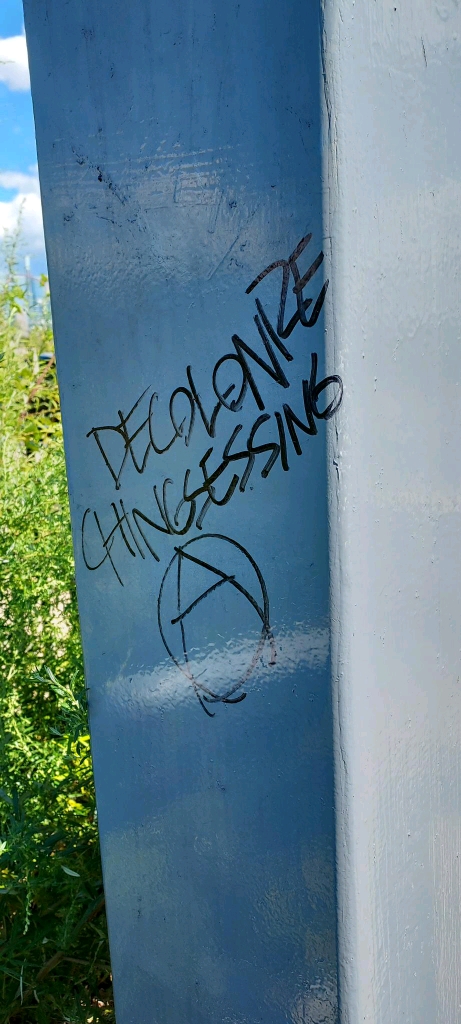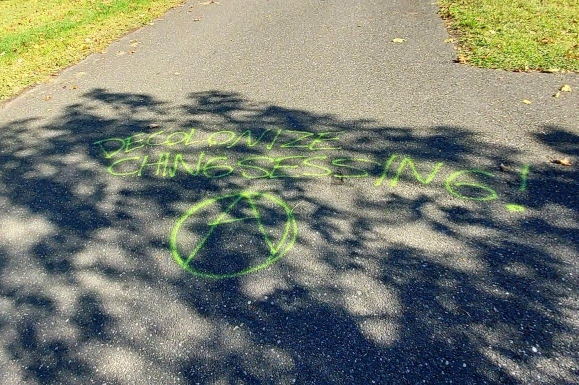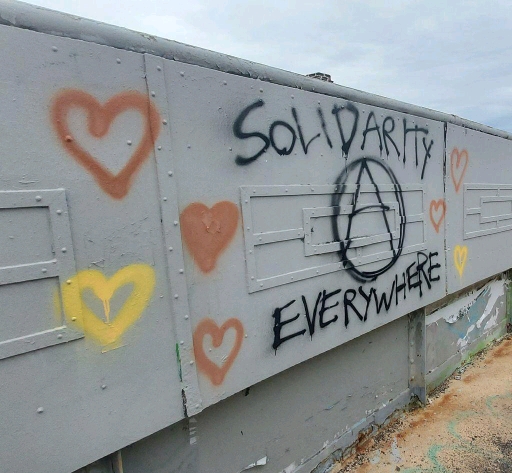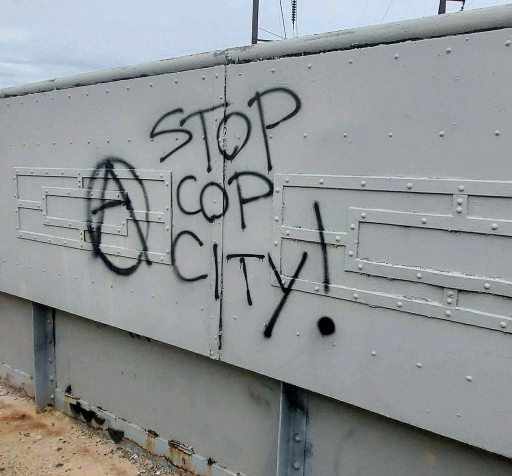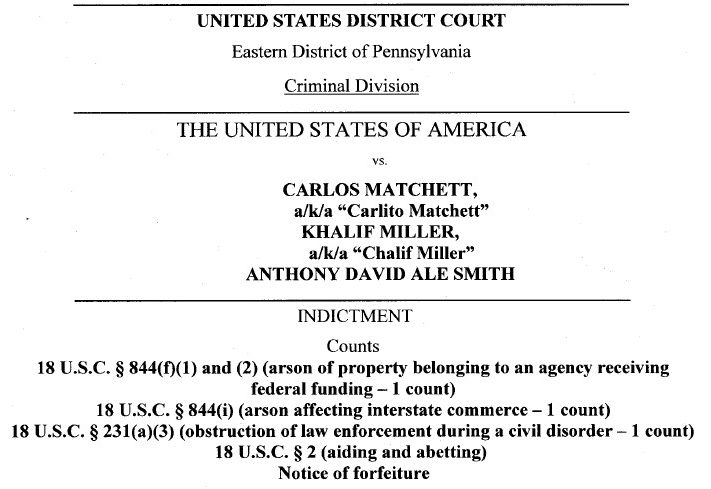Submission
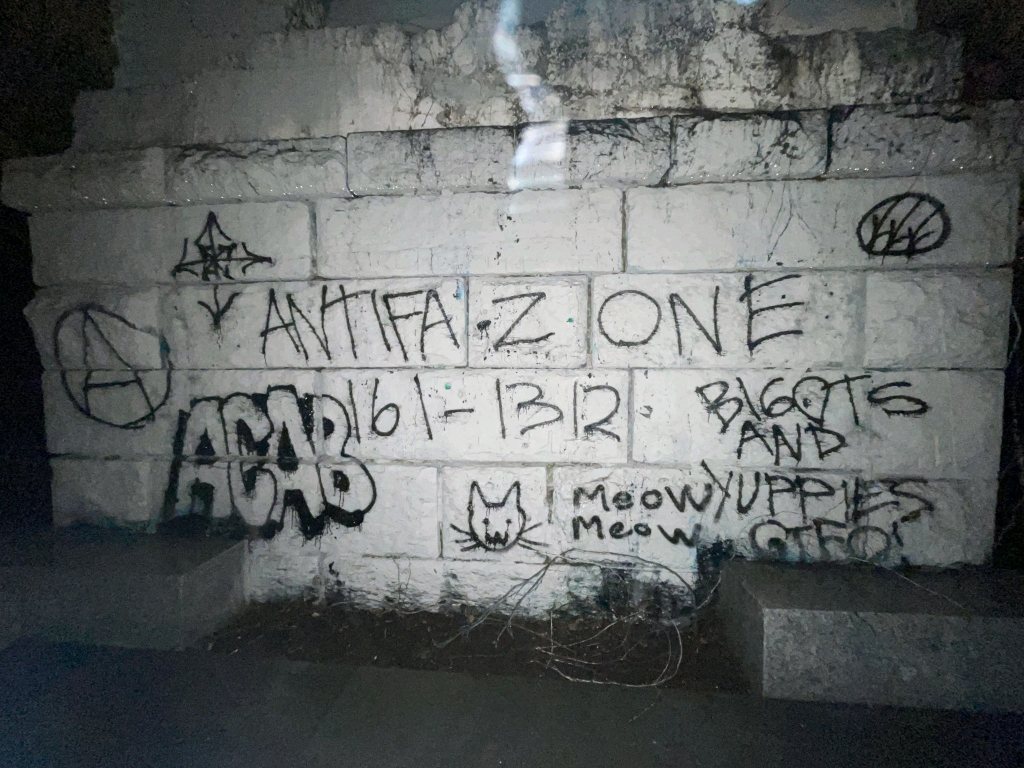
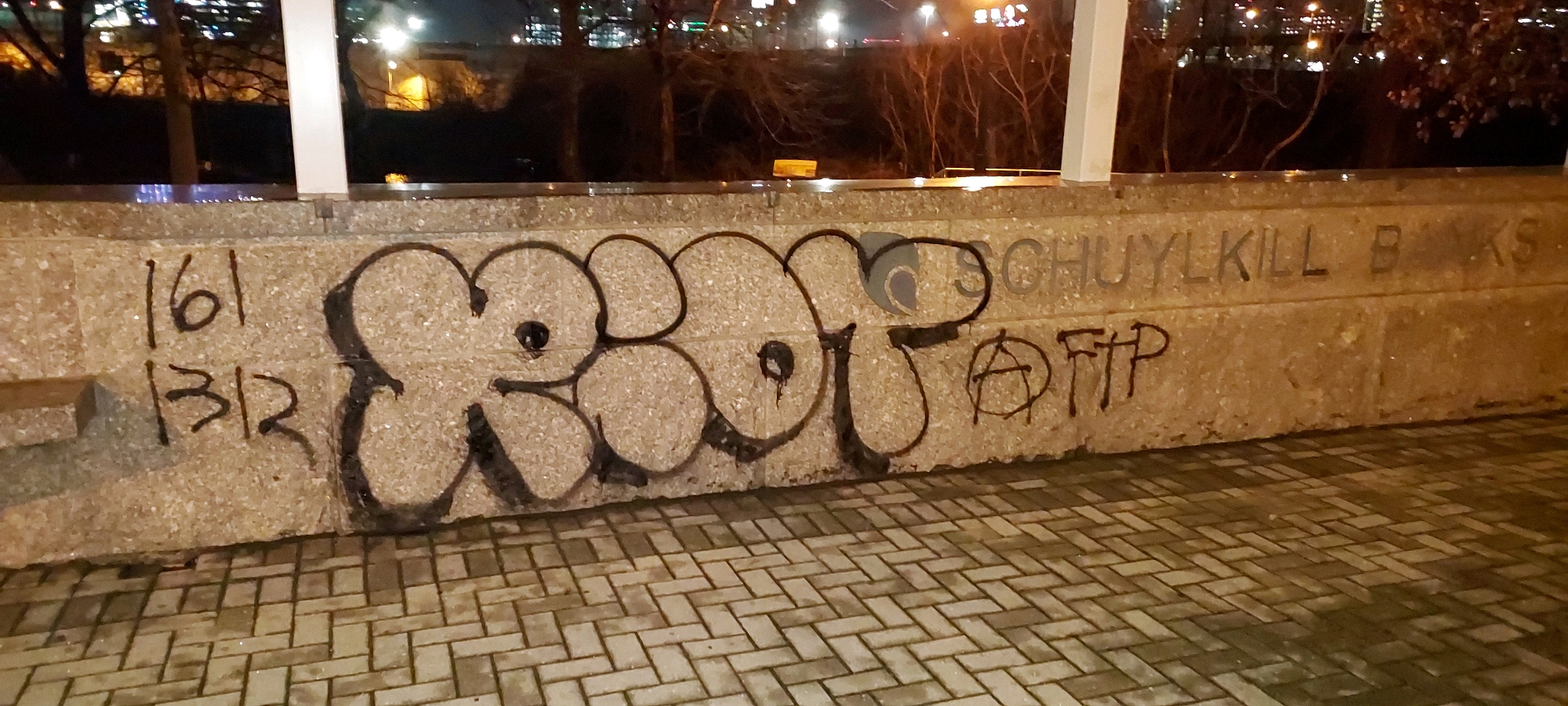
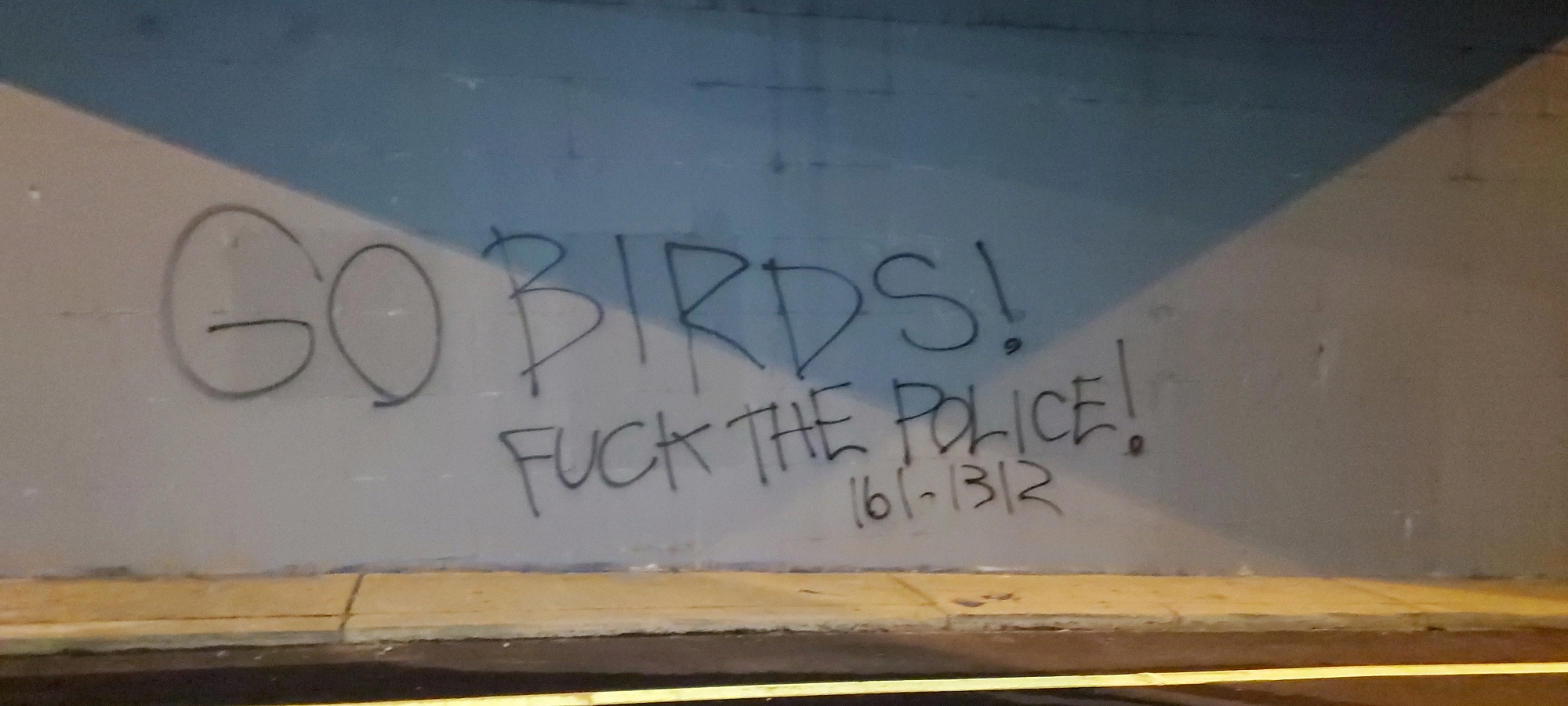
Random rad graffiti!
Philly demo at Greenberg Traurig in Solidarity with the Weelaunee forest!
Submission
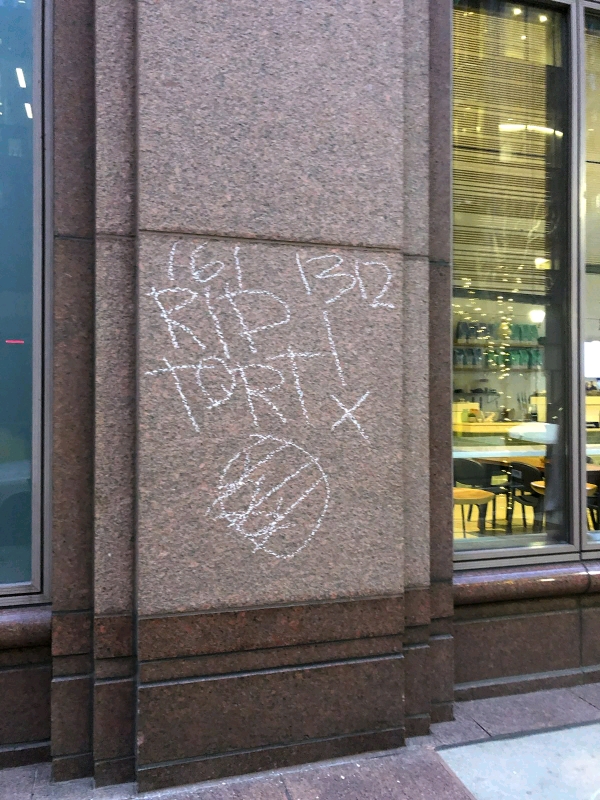
On Tuesday February 21st, there was a demonstration in Solidarity with the Weelaunee Forest Defense / campaign to Stop Cop City at Greenberg Traurig who is on the board and a funder of the Atlanta Police Foundation. We demanded they cut ties to APF, handed out hundreds of flyers, people spoke to to how we must Stop Cop City everywhere, and chalked all over their sidewalks and building. ” RIP Tortuguita! ” “Stop Cop City! “- “FTP-ACAB!” – “Save Chinatown, the UC Townhomes, Cobbs Creek, The Meadows!” – “Defend Chingsessing Meadows! Fuck Cellicon Valley!” – referring to the efforts to stop Ecocidal development at the so called “FDR” Meadows and “Bartram’s” Garden that that are part of the Meadows that the Lenape referred to as Chingsessing.
Here is a zine for more info about that https://phlanticap.noblogs.org/fuck-a-cellicon-valley-zine/
The struggle continues on so keep organizing and take Direct Action, and escalate against colonial developers, their funders, and the police everywhere to dismantle the industrial capitalist state death machine and defend the community and land.
THOSE WHO DESTROY THE EARTH HAVE NAMES AND ADDRESSES!
RIP Tortuguita! Stop Cop City!
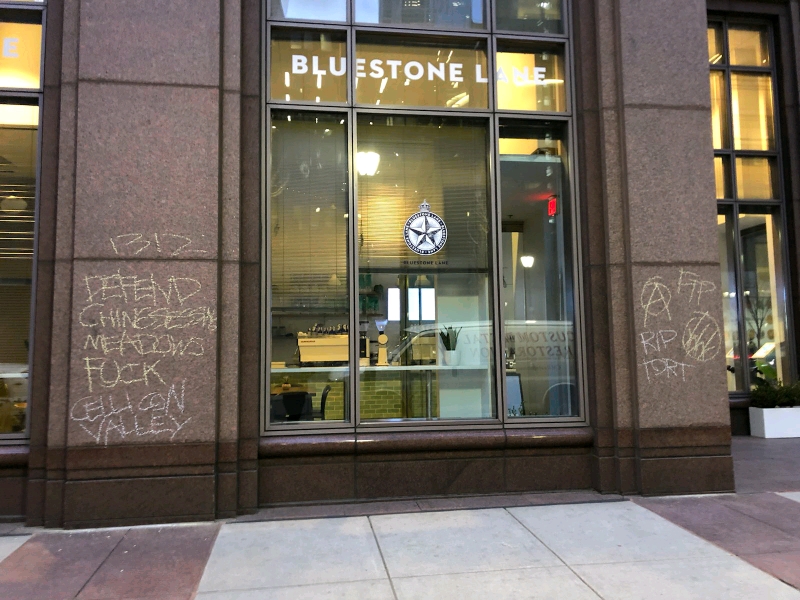
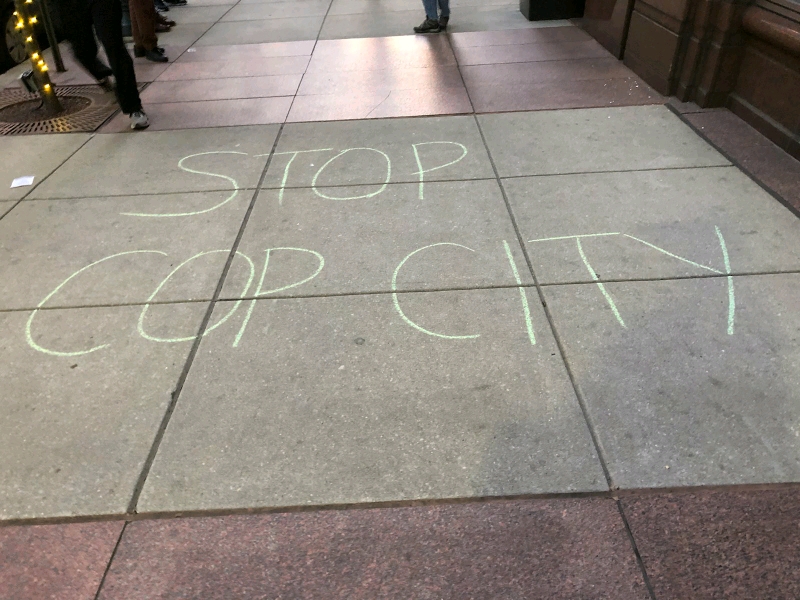
Vigil For Tyre Nichols And Community Skate Against State Violence
Submission
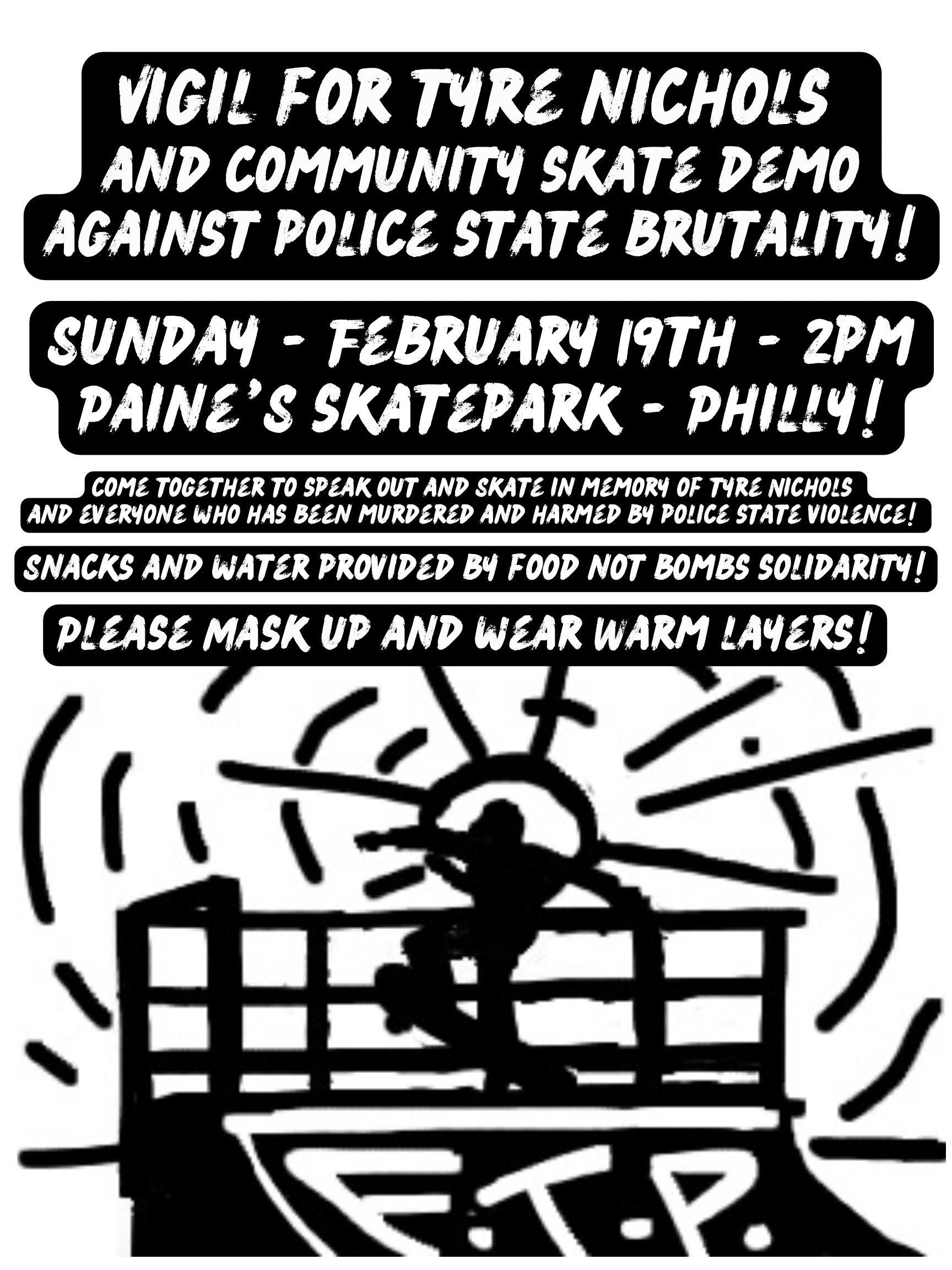
Vigil for Tyre Nichols and community skate demo against police State brutality! Sunday – February 19th – 2PM – Paine’s Skatepark – Philly! Come together to speak out and skate in memory of Tyre Nichols and everyone who was murdered and harmed by police state violence! Snacks and Water Provided by Food Not Bombs Solidarity! Please mask up and wear warm layers!
Graffiti
Submission
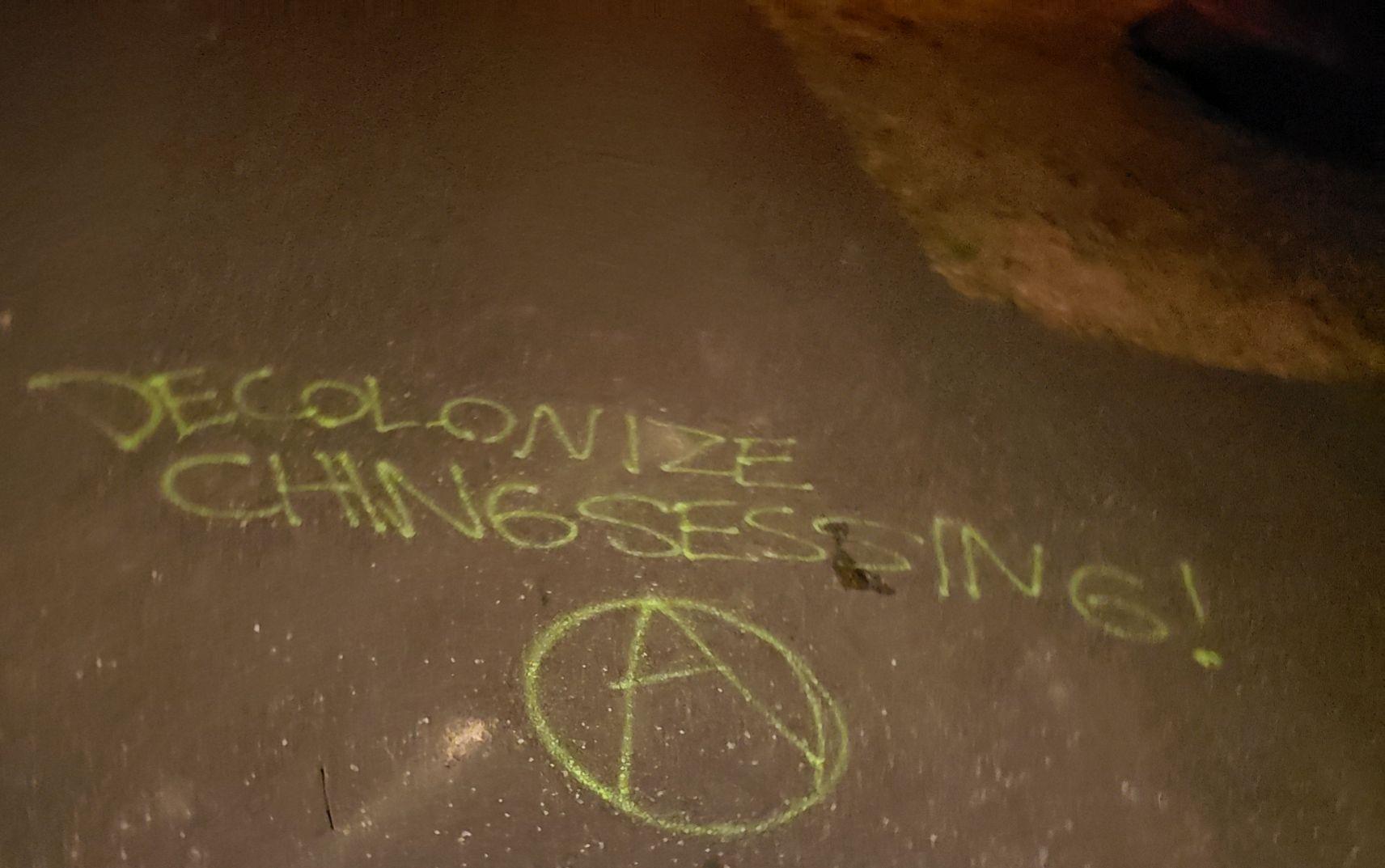

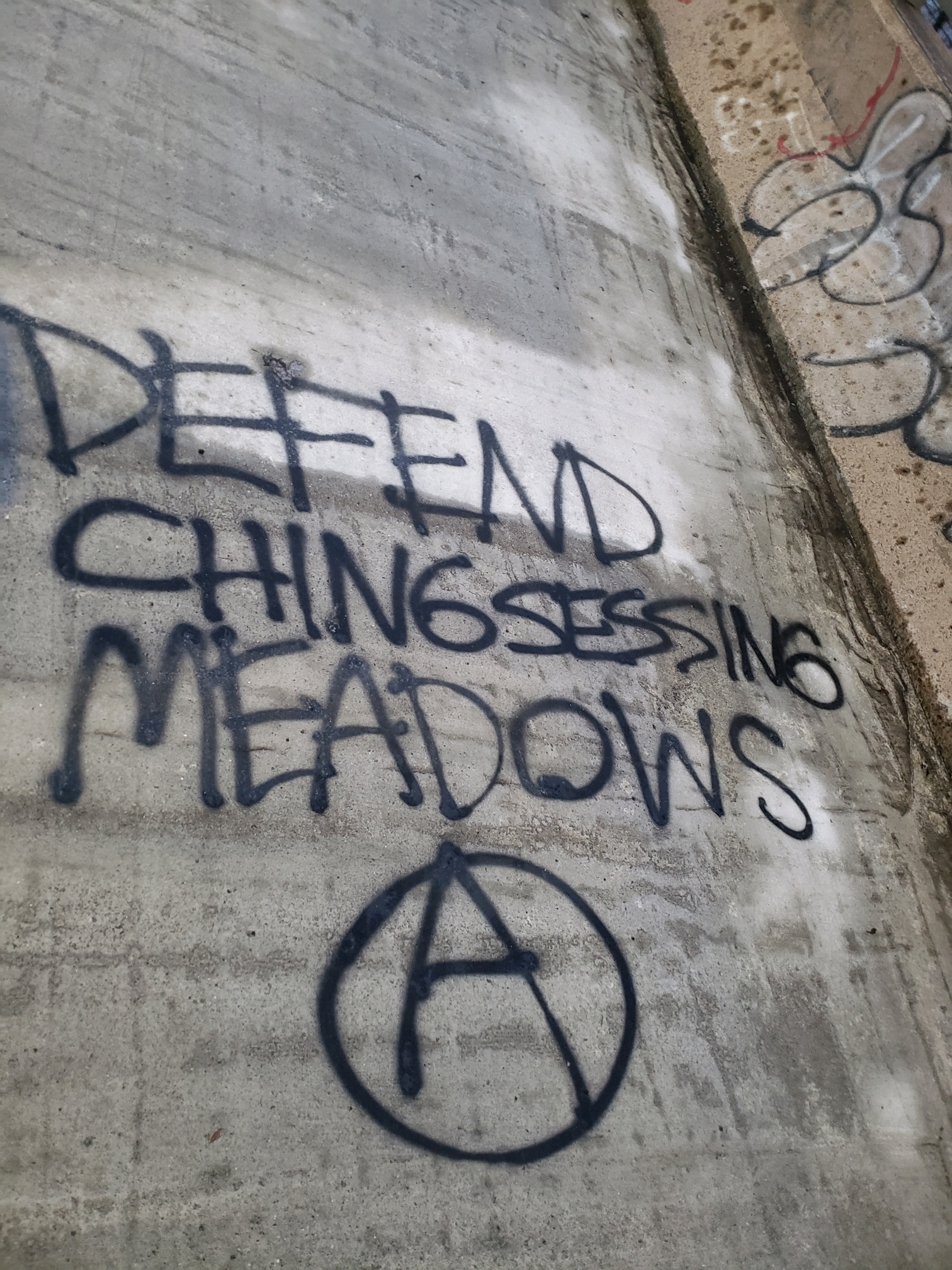
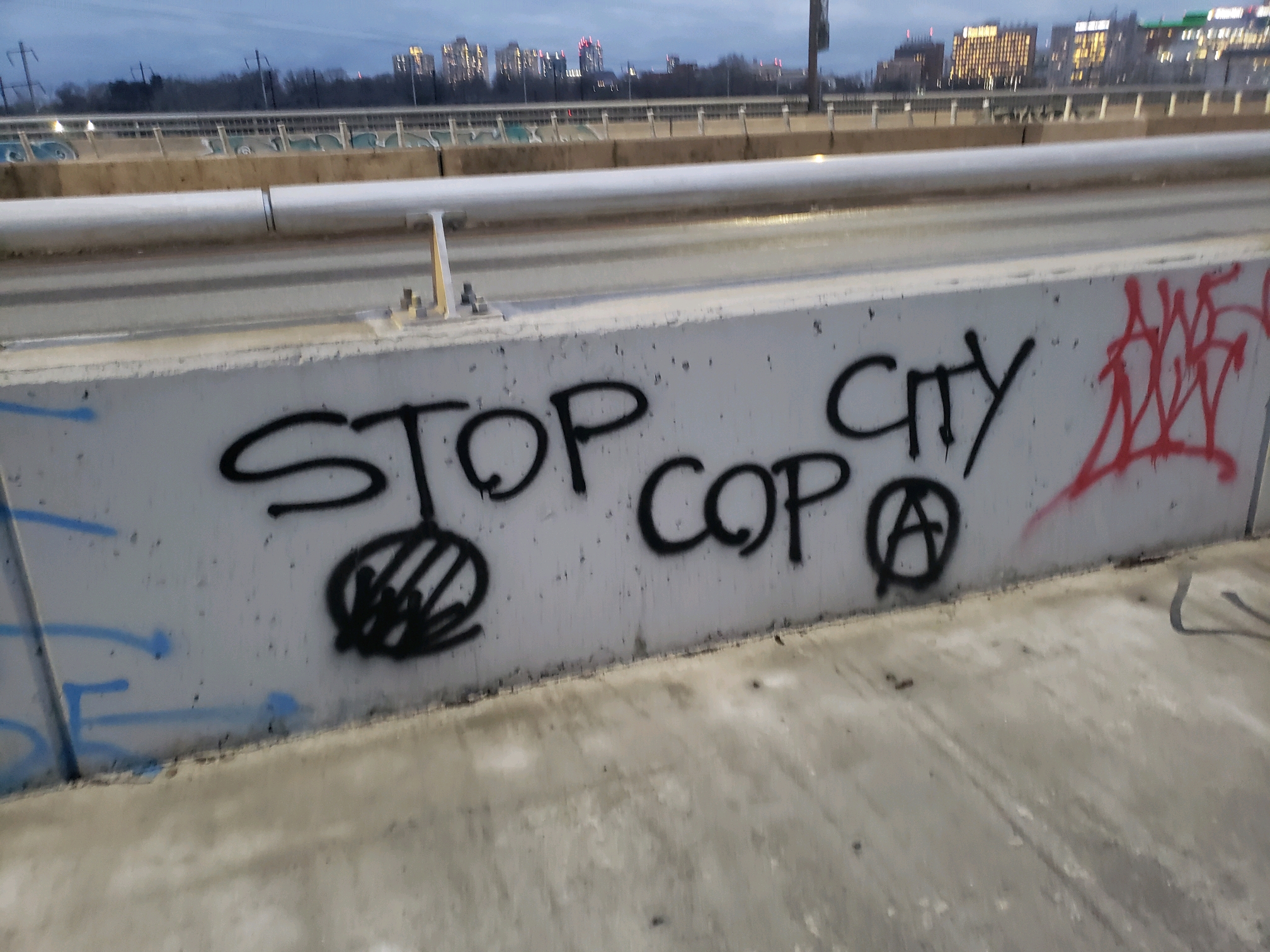
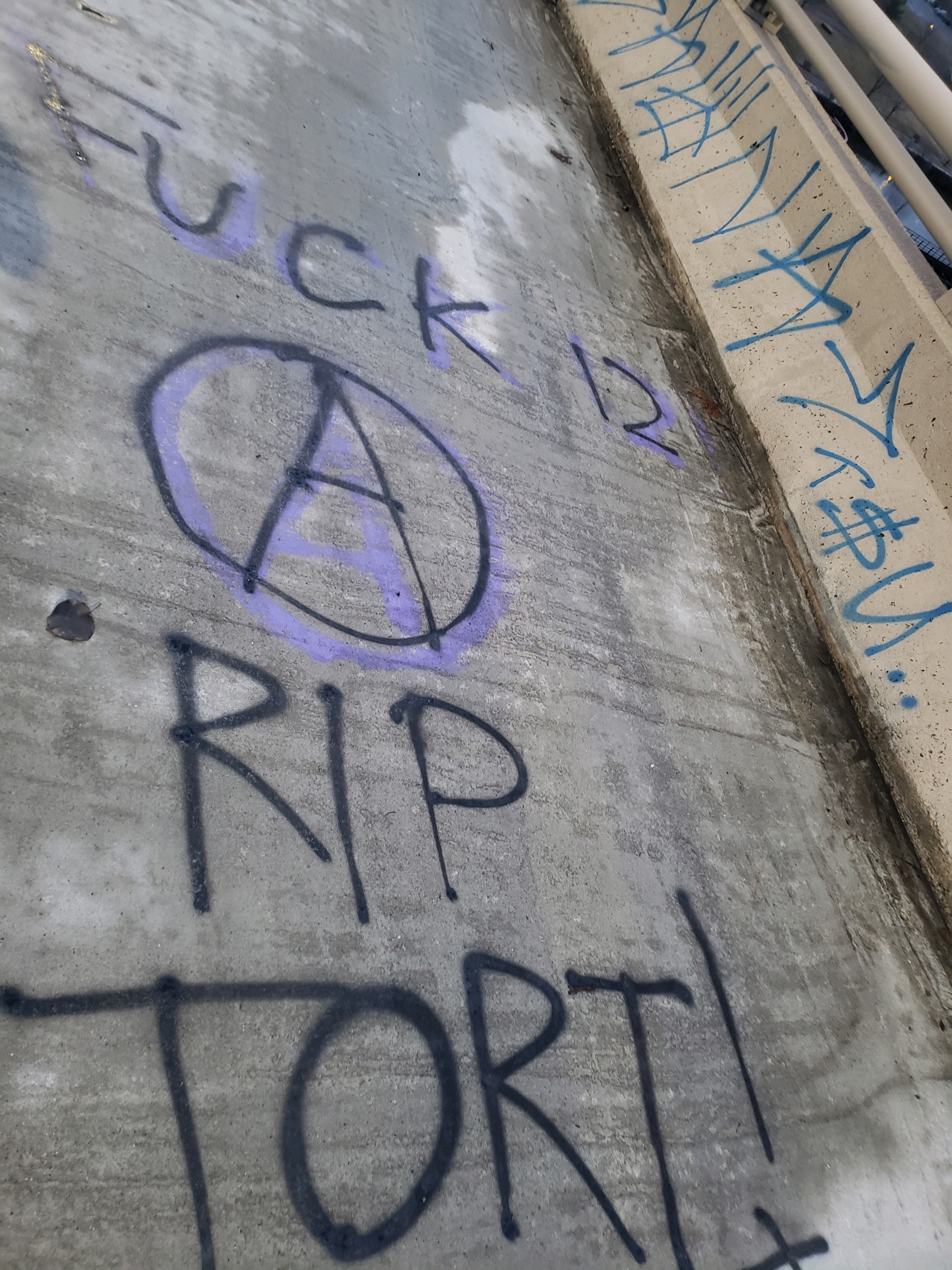

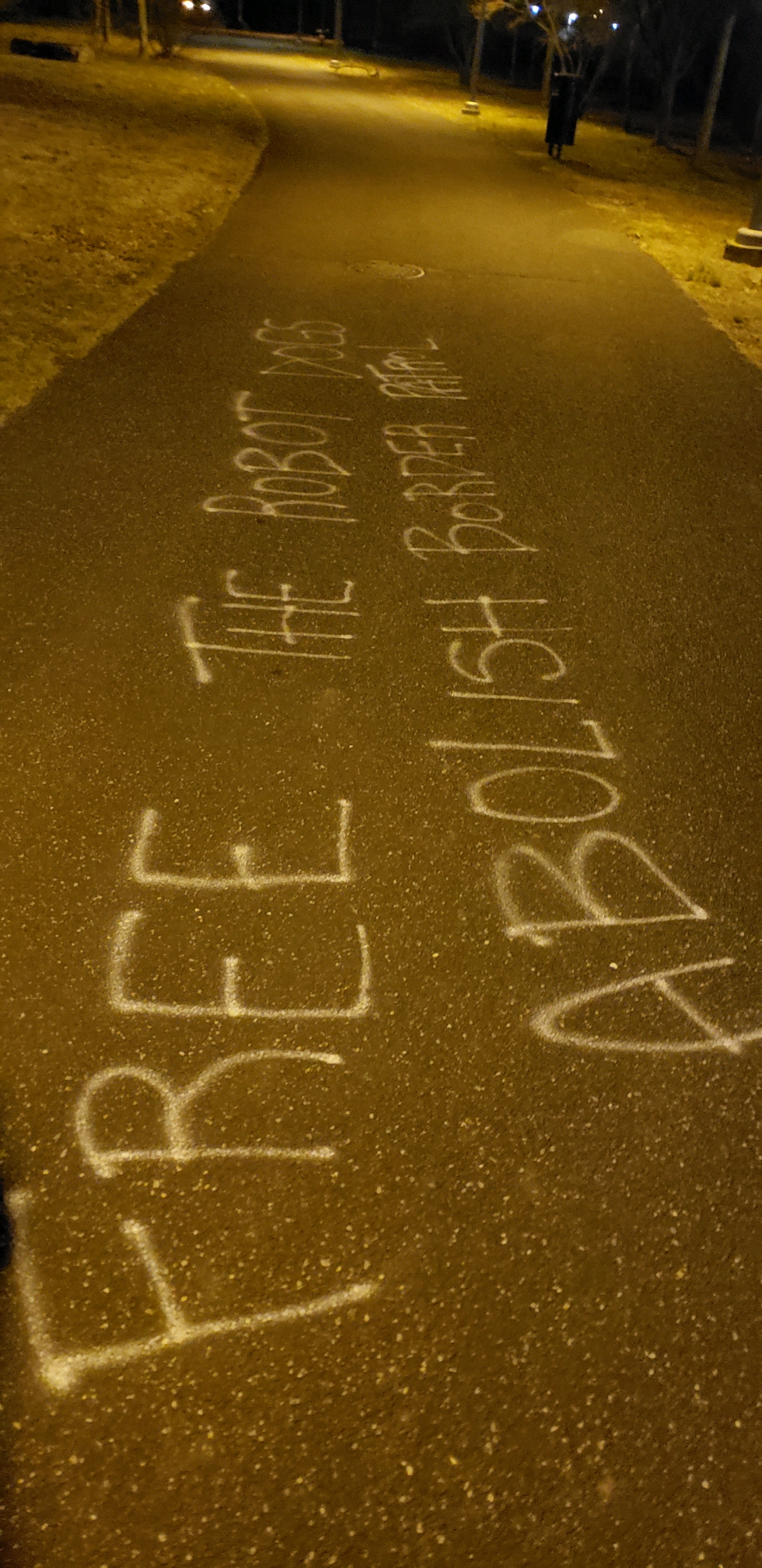
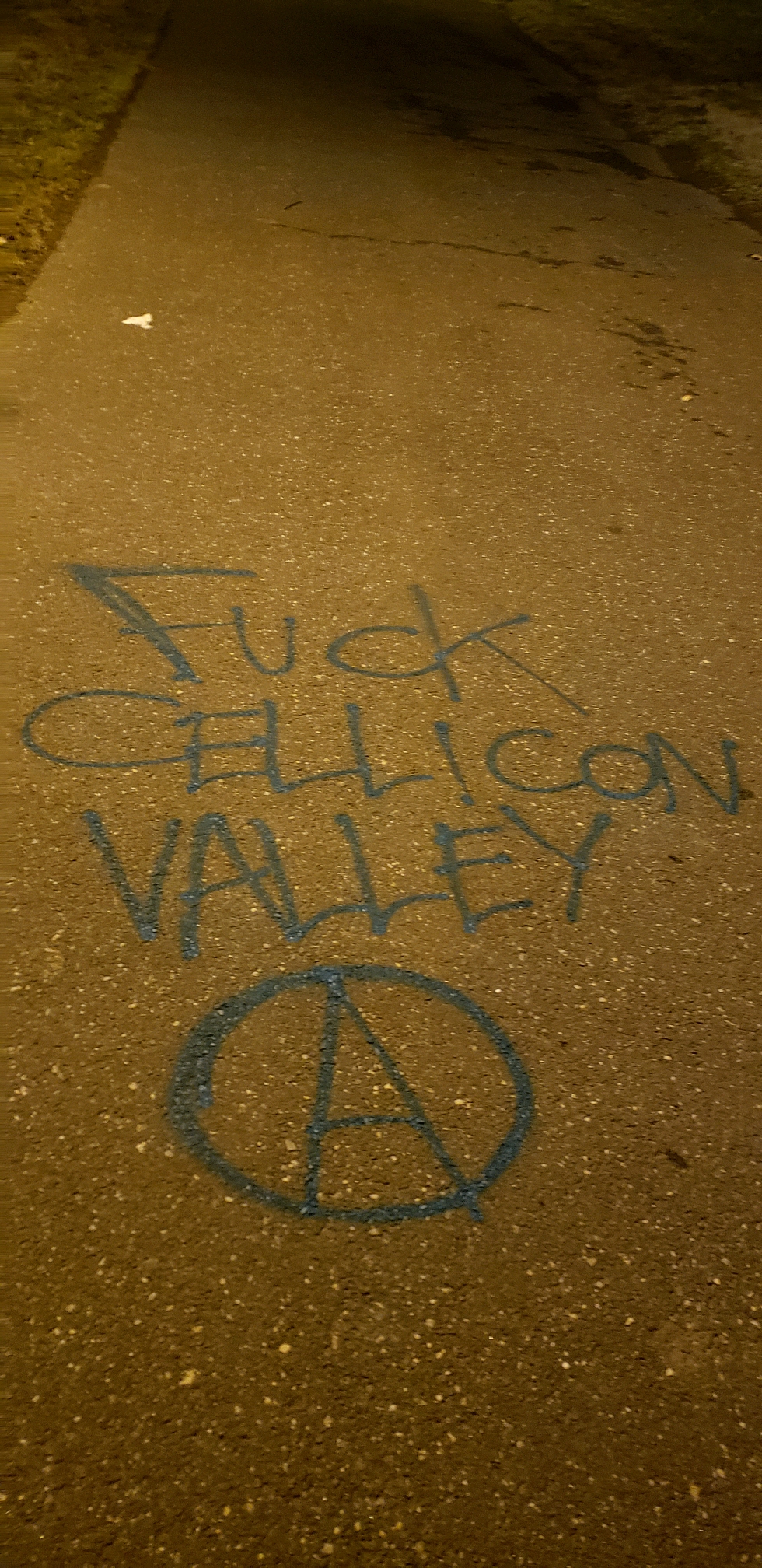
Vigil and Stroll for Tortuguita
Submission
On Saturday 1/21 there was a vigil for Tortuguita Manuel Teran. A group of about 40 adults and children placed candles and homemade signs by the turtle in Clark Park.
People spontaneously made speeches about Tortuguita’s death. The speeches touched on people’s experience of them, grief, martyrdom, and continuing to struggle. People called on each other to target cop city’s sponsors and the contractors responsible for building.
After people had been speaking for a while a small group broke off from the vigil. They took the street with banners. Barricades from a nearby construction site were pulled into the street to block cops and traffic. As the march moved graffiti memorializing Tortuguita and against police was tagged. A realty office had its windows smashed.
The rowdy vigil is the first time things have popped off from Clark Park in a while. A few years ago Cark Park was a regular spot for mid sized black bloc demos to start from. We think that this is worthwhile to revisit because it’s a traditionally anarchist neighborhood and there are lots of alleys nearby to easily change in. It’s exciting to see this kind of energy re-emerge in Philly.
Even though Philly is far from Atlanta, Tortuguita’s death has been deeply felt here. We are angry. We are watching. We are acting. Cop city will never be built.
RIP Tortuguita
Neither innocent nor guilty
Neither terrorists nor protesters
Simply anarchists!
A warm embrace to those arrested in Atlanta, Seattle and everywhere else
Death to civilization
Graffiti for Tortuguita in Philly
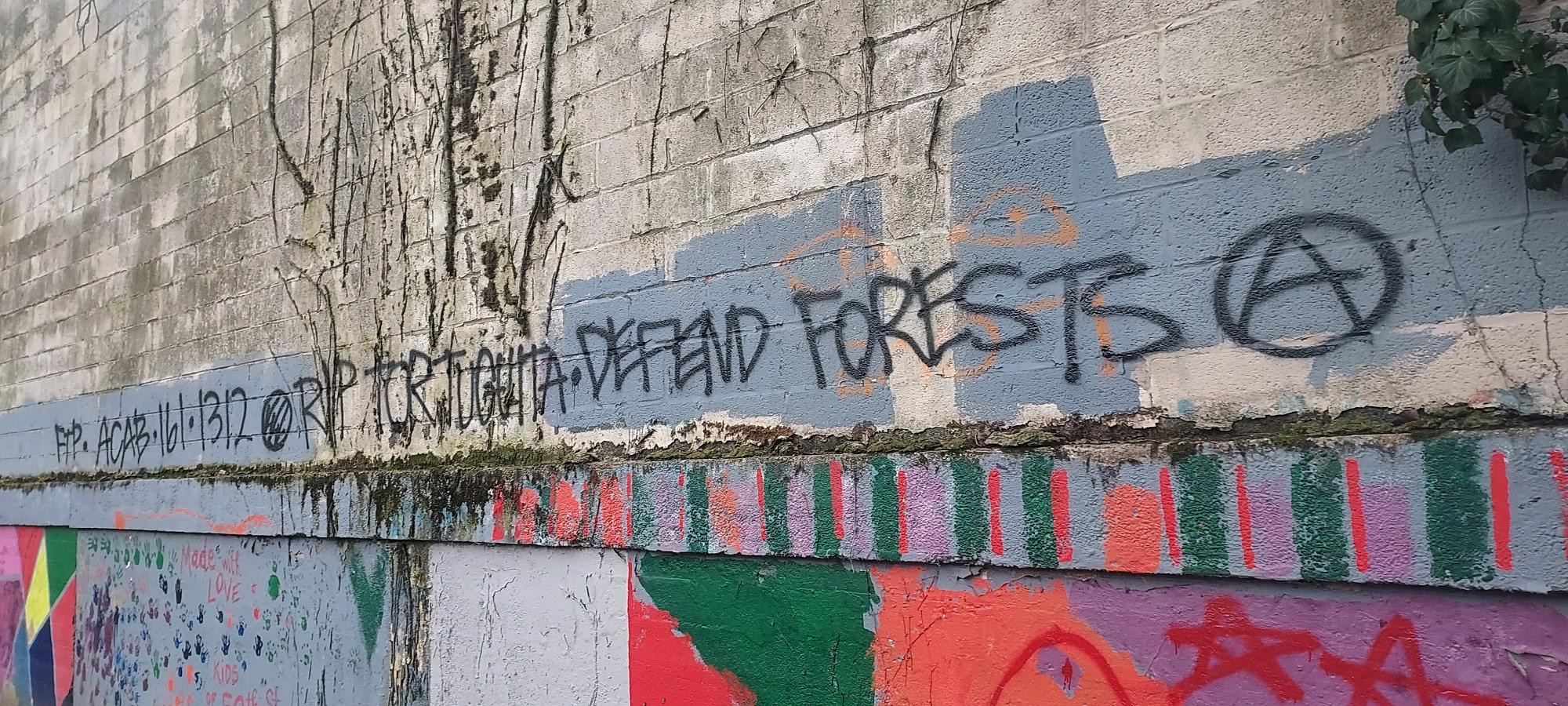
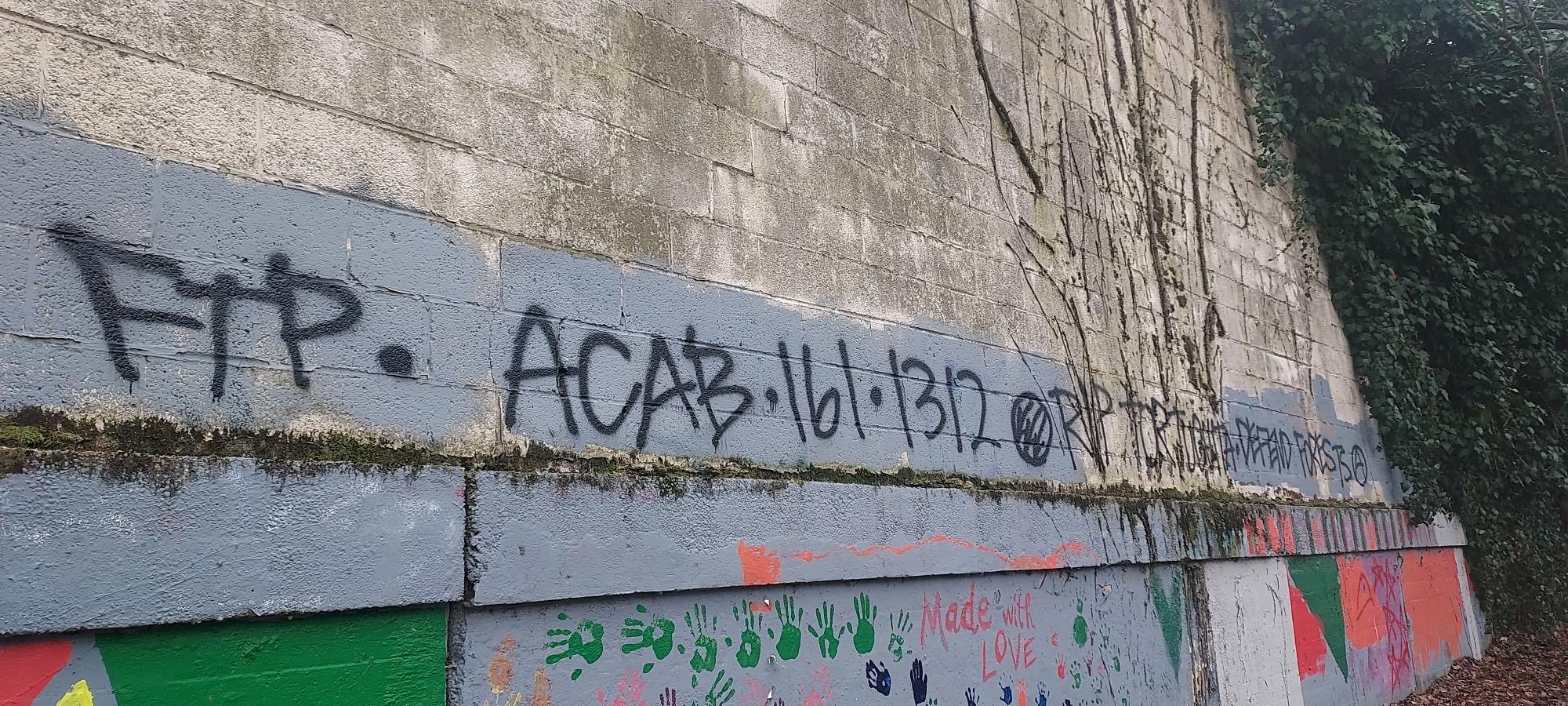
West Philadelphia Vigil Remembers Tortuguita
from Twitter

West #Philadelphia earlier tonight: A vigil at a turtle sculpture in Clark Park to remember #Tortuguita, the forest defender killed near #Atlanta. About 70 people joined a vigil and talked about local struggles. One shared a memory of meeting Tort in the forest last year.

Solidarity Vigil For Tortuguita
from It’s Going Down

Philadelphia, PA
Graffiti in Solidarity with Atlanta and in Memory of Tortuguita in the South NJ
from Jersey Counter-Info
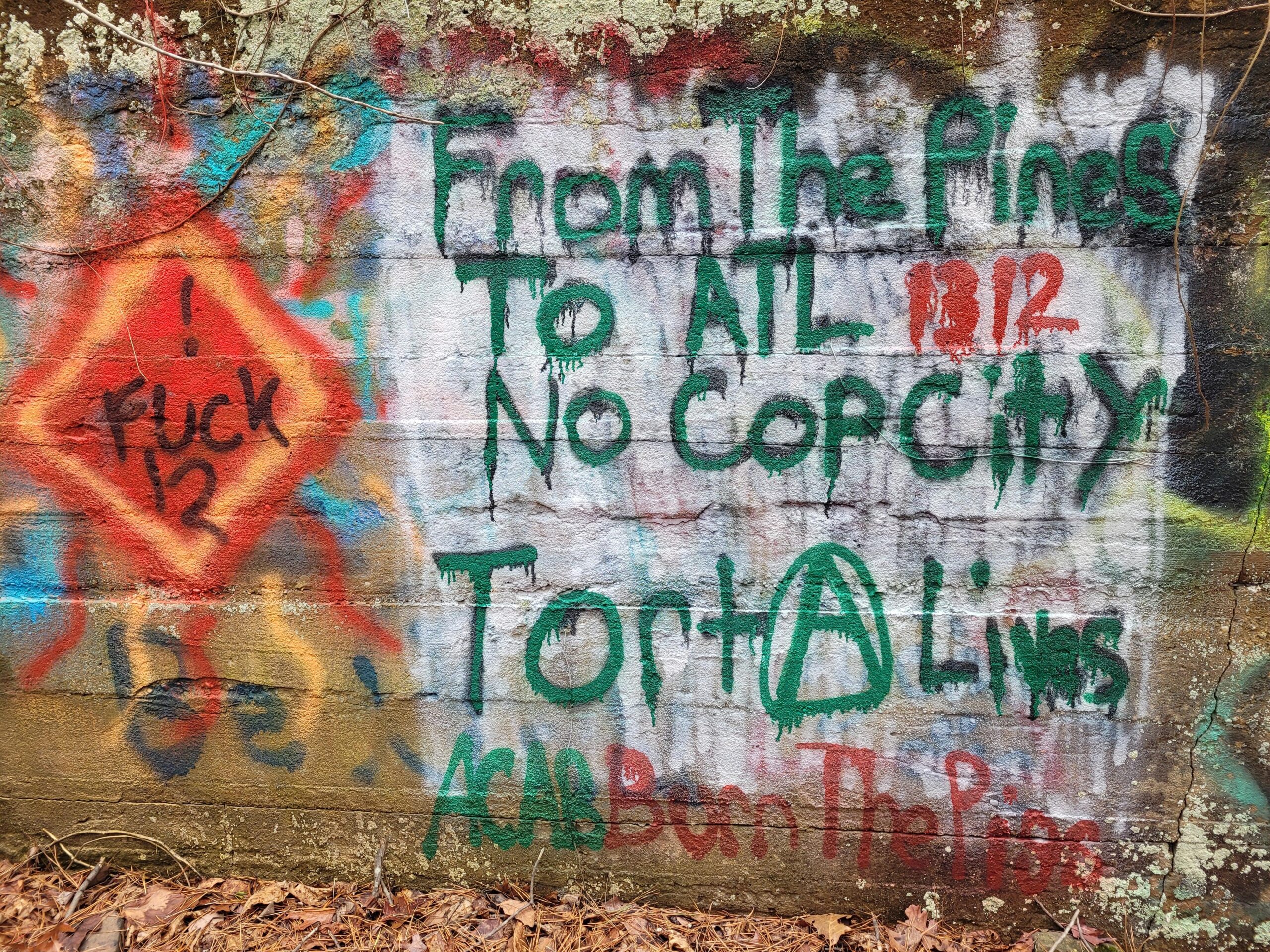
Graffiti placed in the Pinelands of NJ in solidarity with the struggle to Stop Cop City and to Defend the Atlanta Forest and in memory of Tortuguita who was murdered by police while defending the Atlanta Forest.



New Years Eve Noise Demo Reportback
Submission
On the evening of the new year about 10 people held a banner, made noise, shone lazer pointers and set off fireworks in front of the Federal Department of Corrections at 7th and Arch.
People met at a nearby park and walked over together carrying a banner, banging on pots and pans and chanting as they went. Everyone was in bloc and people stayed tight and alert during the demo which lasted about 20-30 minutes. At the prison we were greeted by a heavy police presence of at least three cars. More cops came within 10 minutes of us being there including a few bike cops who followed us for a block or two after we left. Everyone got home safe and no arrests were made.
It seemed like the cops were anxious since there hasn’t been a noise demo at that spot since a particuarly rowdy one two years ago. That demo in 2020 ended with multiple arrests and some people facing heavy charges (all of which have since been cleared I think).
Considering the history, this demo felt like a success. People inside the prison were able to see and hear us and responded by flickering their lights. The police intimidation only reaffirmed how important it is to show up for people on the inside and let them know we’re thinking of them and that they are not alone.
Hopefully more demos happen this year and people are inspired to keep acting in defiance of the police state hellscape we live in. I hope we keep finding each other and keep being creative with new tactics and old ones too.
See you next year!
1312
FREE THEM ALL
FIRE TO THE PRISONS
ONCE THERE WERE NO PRISONS AND THAT DAY WILL COME AGAIN
HAPPY 2023!
XOXO
banner for forest defenders
Submission

On Saturday the 17th we hung a banners in solidarity with our friends jailed in Atlanta for defending the Weelaunee Forest against developers and cops. We hope that our action although small inspires others to act in solidarity with the arrested and against the system that arrests free life.
The struggle against cop city is not over!
From Philly to Atlanta let’s spread and intensify the struggles against police, gentrification, and the destruction of nature!

DEFEND ATL Forest presentation at the Meadows
Submission
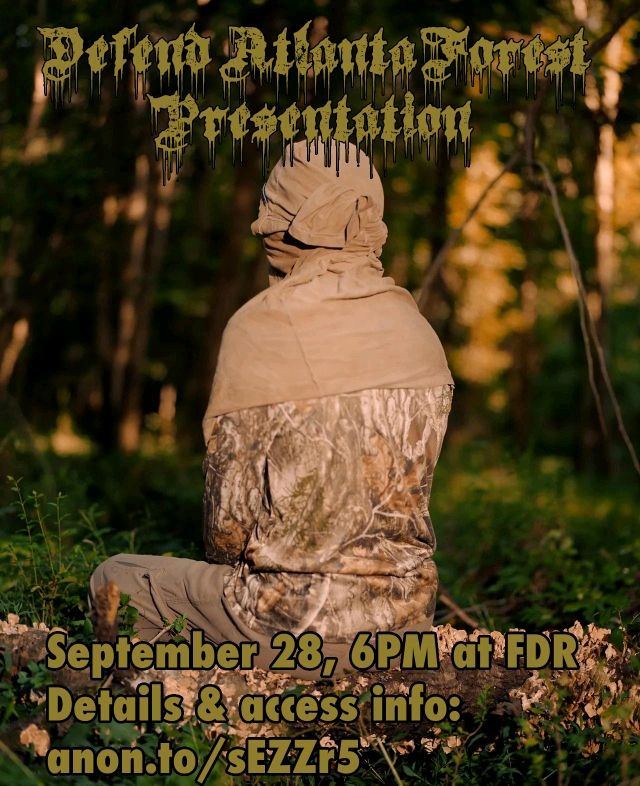
SEPTEMBER 28TH 6PM AT THE MEADOWS! Defend Atlanta Forest / Stop Cop City Tour Presentation In the wake of the 2020 George Floyd rebellion, Atlanta-area officials have planned to build the largest police training compound in the country — by bulldozing the largest urban tree canopy in the country! Meanwhile, film-industry executives plan to clear-cut what remains in order to build “the largest soundstage complex on Earth.”
Join us for an in-depth overview and conversation with on-the-ground activists involved in the historic movement to Stop Cop City and Defend The Atlanta Forest.
Accessibility: The picnic grove is a short walk from the parking lot via a paved pathway with some incline/decline. The picnic area is grassy and/or mulched. Picnic tables and restrooms are available; please bring snacks and water. ADA restrooms are available while the clubhouse is open/staffed.
Location: Meadows Picnic Grove at FDR, 1954 Pattison Ave
Enter the Meadows from the 20th street parking lot by walking west through the community gardens and past the clubhouse.
This event will be a part of many for Meadow Fest. A Gathering to stop the destruction of the Meadows. For the full schedule of events go to: http://savethemeadows.com/events
“Philadelphia Three” Political Prisoner Khalif Miller Languishes Pre-Trial in Federal Prison
from Unicorn Riot
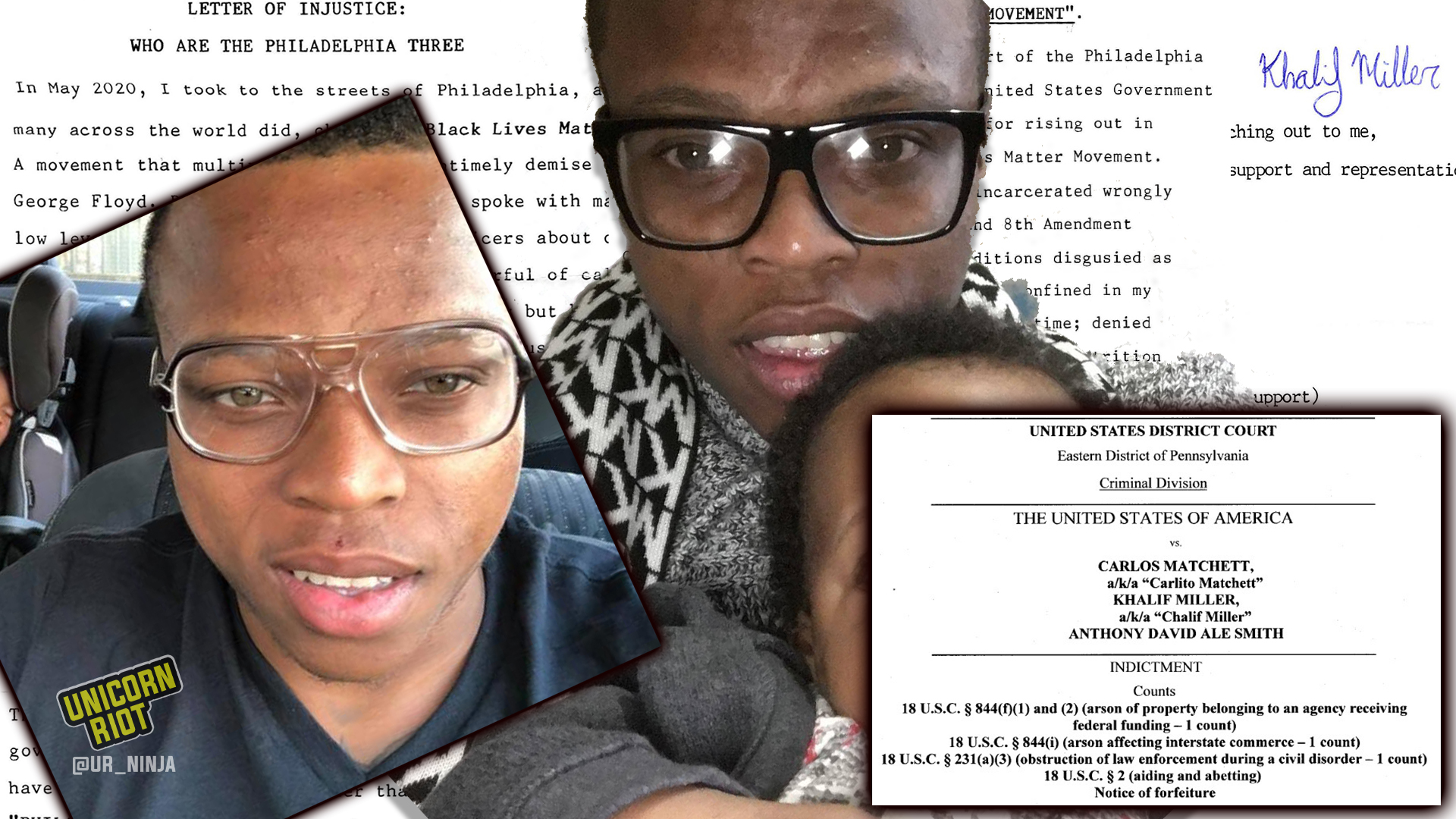
Philadelphia, PA – Federal inmate in the Bureau of Prisons, Khalif Miller, says his rights are being violated while in prison awaiting trial on federal arson charges from the 2020 anti-police uprisings. Miller said he hadn’t had an attorney visit for his first 19 months incarcerated, that he was stabbed 10 times and almost killed in an attack, and has caught COVID-19 twice in prison while awaiting trial as part of a what he says was political targeting by former U.S. Attorney Bill McSwain.
Miller was arrested on October 28, 2020, and charged along with three others, Carlos Matchett of Atlantic City and Anthony Smith, a prominent activist, for allegedly throwing flaming materials into a police car near Philadelphia’s City Hall on May 30, 2020, during the George Floyd Uprising.
Miller has dubbed them the “Philadelphia Three” and the federal government say they conspired together to burn the cop car. Yet, Miller said he’s never even “met nor spoken” to the other co-defendants of the alleged conspiracy and said he was simply taking a picture from atop the police car when it was set aflame.
“The same photo that should’ve set me free, the federal government used to create an elaborate plot in which I have become a political prisoner that I’ve termed the “PHILADELPHIA THREE”, because there are two other people that I’ve never met nor spoken with who the federal government has roped together and charged us with arson and conspiracy all in their endless effort to dismantle and alter the progress of the “BLACK LIVES MATTER MOVEMENT.”
Khalif Miller
Miller wrote to Unicorn Riot from his prison cell and called for support by sharing his story, writing him, and donating for legal support (full letter below with address). Miller is one of over 300 people across the United States who were federally charged during the height of the anti-police and anti-racist uprising of mid 2020. (This wave of prosecutions contradicts claims by supporters of January 6 riot defendants, who often falsely claim the government has declined to serious prosecute nearly anyone for rioting in 2020.)
Miller, a father and business owner, was only 25 years old when he was arrested.
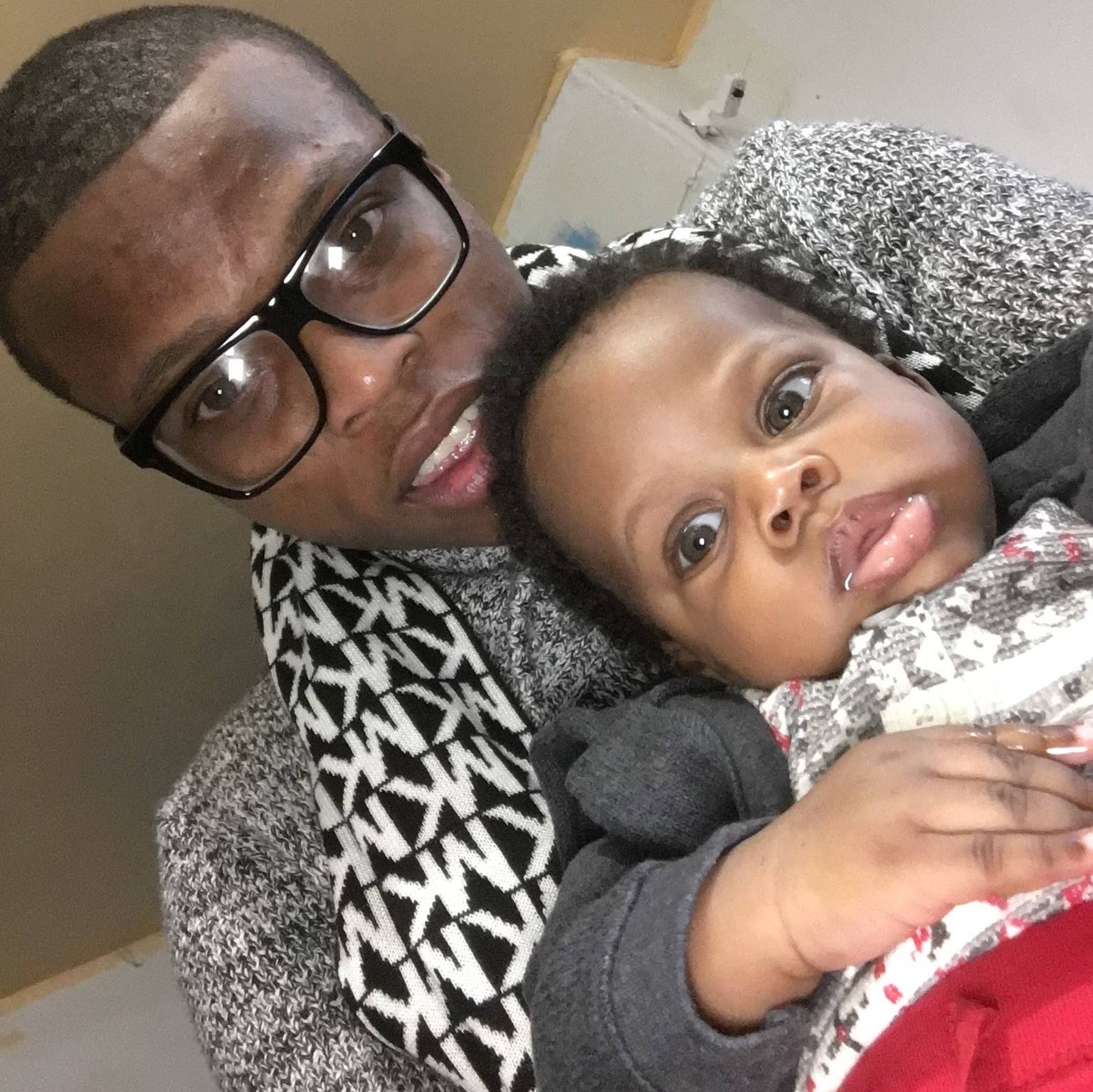
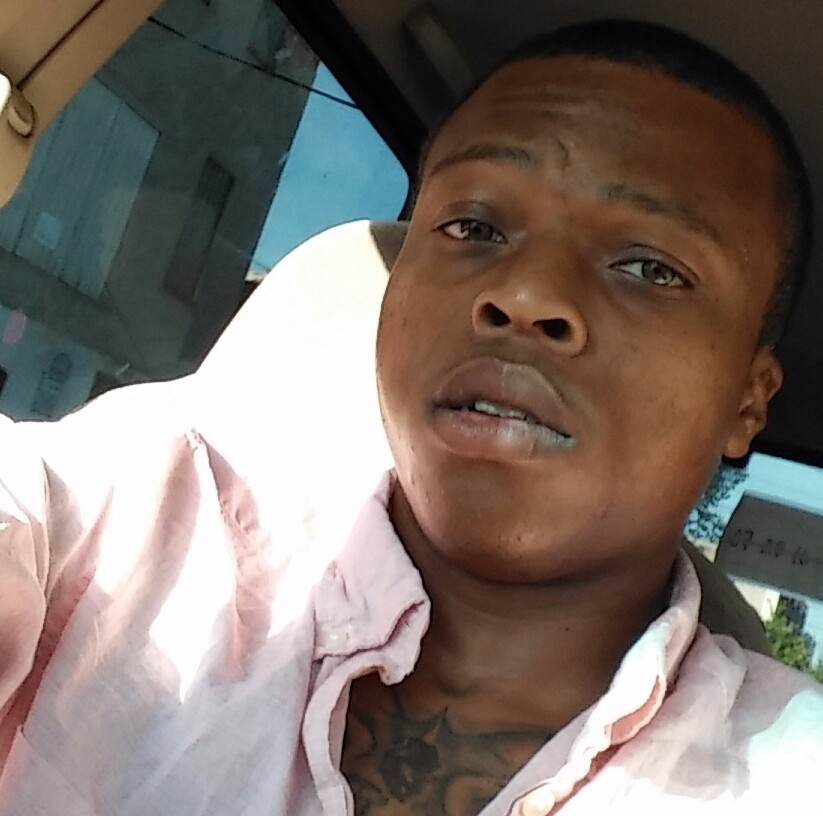
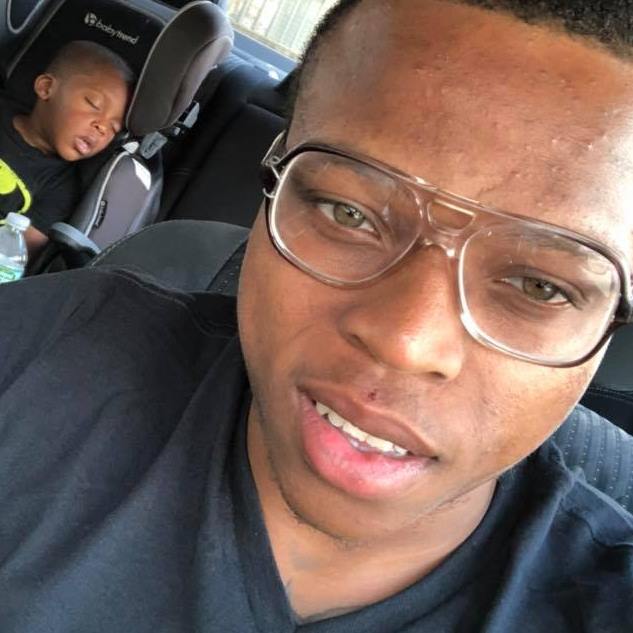
The Philadelphia Three were indicted (pdf) on October 20, 2020, after a grand jury charged them with obstruction of law enforcement during a civil disorder and two counts of arson. If convicted, they face a mandatory minimum of seven years in prison with a maximum of 65 years, with three years of supervised release and a fine of up to $750,000.
Guilty Plea, Arson Charges Dropped, and Sentencing for Woman Who Set Police Cars on Fire
After the massive uprisings against anti-Blackness and police terror across the country in 2020, dozens of cities were left with millions of dollars in property damage. The federal government then levied arson charges and a rare 1960s vintage civil disorder charge in attempts to punish protesters with long federal prison sentences. For more on the recent use of civil disorder charges, see our 2020 report on an Illinois man charged with civil disorder by the feds for participating in the uprising in Minneapolis.
In Philadelphia, there were several other high-profile arson cases from activity on May 30, 2020. Directly related to the Philadelphia Three was the case of Lore Elisabeth Blumenthal, a 32-year-old white massage therapist. Wearing a bandana over her face along with goggles, Blumenthal was seen in photographs throwing flaming material toward a police car. Authorities traced the t-shirt she was wearing to an Etsy review and arrested Blumenthal within days.

In March 2022, Blumenthal pled guilty to two counts of interfering with law enforcement officers during a civil disorder in connection with what the feds state was “arson of two” police vehicles, the same vehicles the Philadelphia Three are charged for. Her arson charges were dropped in the plea deal. She was subsequently sentenced to two-and-a-half years in prison.
In a key photograph, Miller is visible in the background standing on the police car, while Blumenthal is the right foreground with the flaming material in her hand. Miller is being charged with arson for the vehicles, yet, he maintains his innocence:
“As the protest started to take a turn, I was taking photos when suddenly mid-photo chaos erupted and the car that I was standing on (a government official vehicle) erupted into flames as it was firebombed. Eventually every vehicle in the area received the same fate.”
Khalif Miller letter to Unicorn Riot


